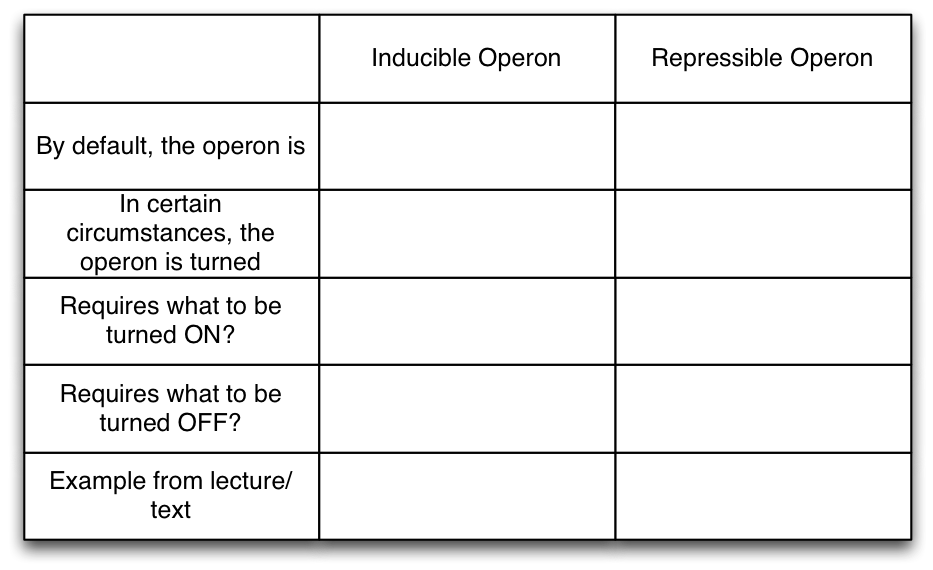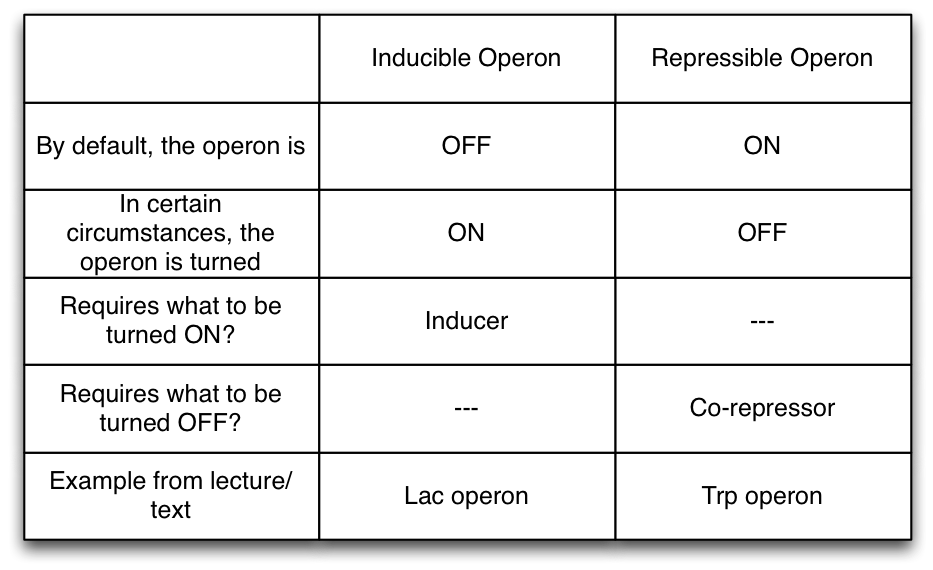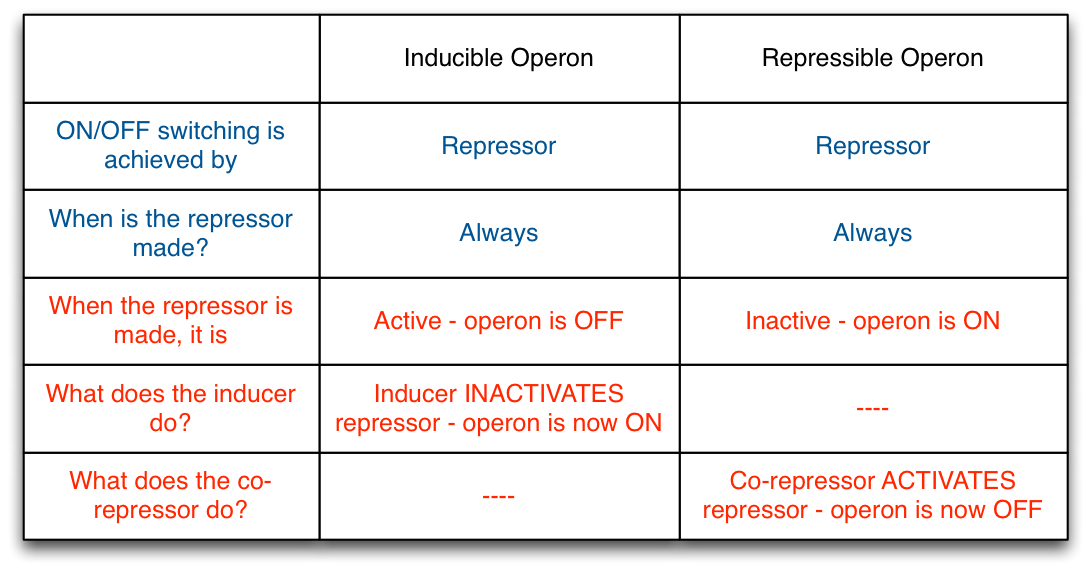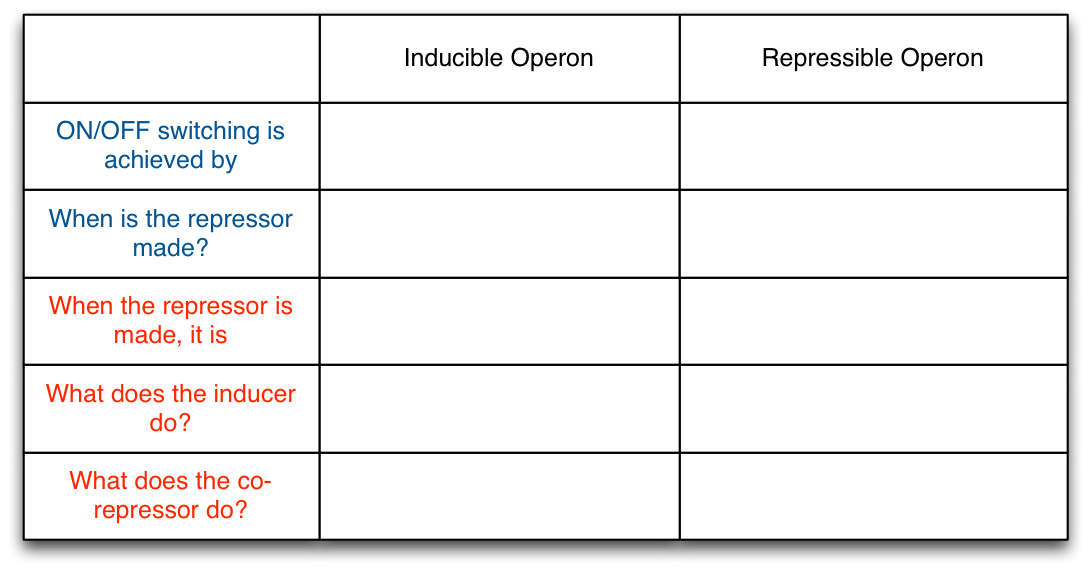- General concepts of gene regulation
- The lac and trp operons
- Catabolite repression
1. The concepts covered here can be reviewed in your textbook, pages 219-223 (Pre-transcriptional Control), and your lecture notes.
2. Most bacterial operons are regulated using negative regulation. Review the General concepts of gene regulation topic, which discusses how negative regulation is achieved in bacteria.
3. There are two types of operons with negative regulation in bacteria: inducible and repressible. After reviewing the relevant info in your textbook and notes, copy and fill the table below. Mouse the word ANSWER to see if your table is correct.

ANSWER


- Draw a diagram of the lac operon in the OFF (default) position.
- Draw a diagram of the lac operon in the induced (ON) position.
- Make sure to draw all the parts of the operon, including the LacI gene and the repressor.
- Make sure to indicate on each diagram if the repressor is active or inactive.
- In a paragraph with a few sentences, describe why this operon is normally in the OFF position and when and how, it is turned ON?
5. Review information in your textbook about the trp operon:
- Draw a diagram of the trp operon in the ON (default) position.
- Draw a diagram of the trp operon in the repressed (OFF) position.
- Make sure to draw all the parts of the operon, including the TrpI gene and the repressor.
- Make sure to indicate on each diagram if the repressor is active or inactive.
- In a paragraph with a few sentences, describe why this operon is normally in the ON position and when and how it is turned OFF?
6. Inducible and repressible operons operate on very similar principles, with a couple of crucial differences (which make them inducible OR repressible). Keeping this in mind, fill in the following table that compares the two types of operons. Mouse over the word ANSWER below to see if your table is correct.

ANSWER
7. If you feel that you have mastered the concepts on this page, you can move to the next topic of this sub-unit, explores positive regulation in the lac operon.